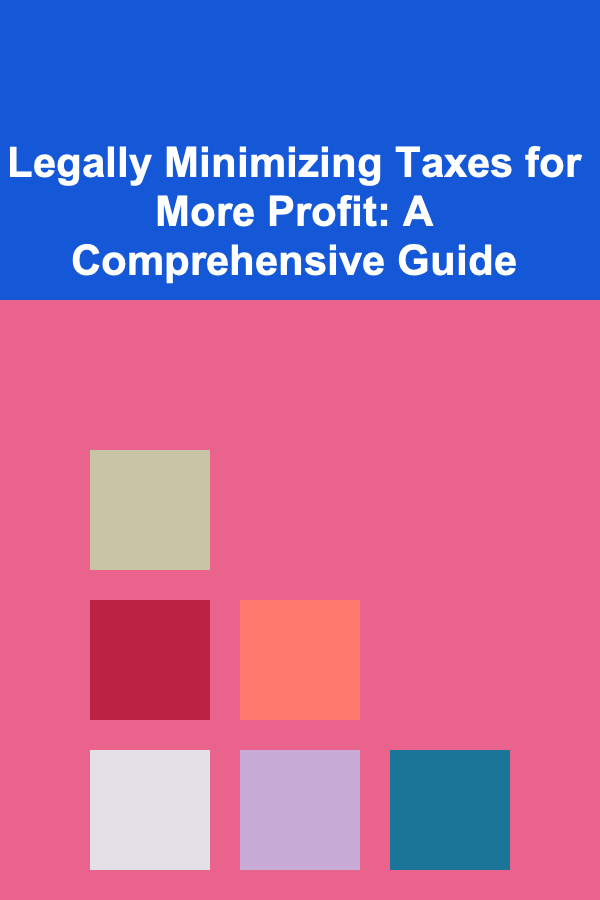
Address Labels for Teachers: A Back-to-School Guide
ebook include PDF & Audio bundle (Micro Guide)
$12.99$6.99
Limited Time Offer! Order within the next:
Not available at this time

As the back-to-school season approaches, teachers are tasked with preparing their classrooms, organizing materials, and getting ready to welcome their students. One often-overlooked, but highly practical, part of this preparation is managing the myriad of labels that teachers need for everything from student assignments to classroom supplies. Address labels, while simple, can make a big difference in streamlining communication, ensuring organization, and adding a personal touch to the learning environment.
In this comprehensive guide, we will explore the importance of address labels for teachers, how to create and use them effectively, and the various types of labels that can simplify the teaching experience. From the logistical advantages to the creative possibilities, this guide aims to help teachers efficiently organize their classrooms and foster a more organized school year.
The Role of Address Labels for Teachers
Address labels may seem like a small item, but they play a significant role in improving efficiency in the classroom and ensuring clear communication with parents, colleagues, and students. Here are several reasons why teachers should consider using address labels:
1.1 Streamlining Communication with Parents
One of the most frequent uses of address labels in the classroom is for sending out notices, newsletters, and permission slips to parents. By using address labels, teachers can avoid the tedious task of handwriting addresses on each envelope. Address labels help to:
- Save Time: Teachers can simply print labels with students' addresses or parents' contact details, which speeds up the process of mailing important information.
- Reduce Errors: By using pre-printed labels, teachers reduce the likelihood of misspelling addresses or sending documents to the wrong recipient.
- Enhance Professionalism: Printed labels give the correspondence a polished, professional appearance, which is particularly useful for formal communications.
1.2 Keeping Track of Classroom Supplies
Teachers often need to label classroom supplies, books, and materials to ensure they are well-organized. Address labels are a great solution for labeling items such as:
- Books: Whether you're organizing a classroom library or marking personal textbooks, address labels can be used to write the title and owner's name.
- Student Supplies: Items like pencil boxes, folders, and art supplies can be labeled with students' names, helping to prevent confusion.
- Classroom Storage: Teachers can use address labels to clearly mark boxes, storage bins, and filing cabinets with their contents, creating a more organized classroom.
1.3 Personalizing the Learning Environment
Address labels can also be used creatively to personalize the classroom and create a welcoming environment for students. You can use labels to:
- Label Student Desks: Personalized address labels with student names can be placed on desks, creating a sense of ownership and responsibility.
- Organize Classroom Materials: Teachers can customize labels to match the color scheme or theme of the classroom, making the space more visually appealing and cohesive.
- Create Name Tags: Address labels can be used to quickly create name tags for students during group activities or presentations, helping to foster a more inclusive and interactive atmosphere.
How to Create Address Labels for Teachers
Creating address labels for teachers is a relatively simple task, especially with the numerous online tools and software available today. However, it's important to know what steps to take and how to use the tools efficiently. Here's a step-by-step guide on how to create address labels for teachers:
2.1 Choose the Right Label Template
Before creating labels, it's essential to choose the appropriate template based on your needs. Most word processing software (like Microsoft Word, Google Docs, or even specialized label design tools) offer pre-made templates that are compatible with popular label sizes, such as:
- Avery 5160: A common size for address labels (1" x 2-5/8").
- Other Avery Sizes: Depending on the printer and the project, you may need different label sizes, like square labels or larger ones for different uses.
You can also find templates for custom-sized labels if you have a specific need. The software will typically provide a guide on how to align your labels to the sheet of labels.
2.2 Input Information
Once you've selected the template, you can begin inputting the information for each label. Depending on your purpose, this could include:
- Student Names and Addresses: If you're mailing documents to parents, you'll need to enter their contact details. You can input this manually, or if you're using a spreadsheet, many label-making tools allow you to import the data directly from an Excel or CSV file.
- Classroom Items: For labeling classroom supplies, input the relevant text (such as the item's name or student's name) into the template.
- Personalized Messages: If you want to personalize labels for student activities or rewards, you can add messages such as "Great Job, Sarah!" or "Reading Superstar."
2.3 Customize Your Design
Many teachers enjoy customizing their labels to add a personal touch. Here are a few tips to make your labels stand out:
- Font Choices: Choose a clear and legible font. Teachers may also opt for fun, whimsical fonts that fit the classroom's theme (e.g., a "Back to School" font style).
- Colors and Images: Incorporate colors or clipart (e.g., pencils, apples, books) to make the labels more visually appealing. Be careful not to overwhelm the label with too much design---simple is often better.
- Borders and Layout: Most software allows you to adjust the layout, adding borders or frames to the labels for an extra touch of flair.
2.4 Print the Labels
After finalizing the design, you can print the labels. Be sure to use the appropriate type of paper or label sheets that match the template. Follow these steps for a smooth printing experience:
- Test Print: Always print a test sheet on plain paper before printing on the actual label sheets. This helps ensure the text is aligned correctly and the design looks as expected.
- Print in Batches: For larger classes, print the labels in smaller batches to avoid wasting paper or labels if an error occurs.
- Check Ink Levels: Make sure your printer has enough ink to avoid streaks or faded text, which can make the labels harder to read.
Types of Labels for Teachers
Teachers can benefit from using a variety of different types of labels in their classrooms. Here are some of the most common and useful labels for teachers:
3.1 Address Labels for Correspondence
As mentioned earlier, address labels are ideal for sending home communication to parents, such as newsletters, permission slips, or school event information. In addition to student addresses, you can use labels for:
- Classroom Announcements: When sending general notices to parents or guardians, such as information about parent-teacher conferences, school fundraisers, or field trips.
- Return Address Labels: You can also print return address labels with your school's name and contact information to create a professional look for outgoing mail.
3.2 Classroom Labels for Supplies
Keeping the classroom organized can be a challenge, especially when there are many materials and supplies to keep track of. Labels for classroom supplies can help reduce clutter and improve efficiency. Some ideas include:
- Book Labels: Mark personal student books, library books, or textbooks.
- Student Supplies: Use labels for individual student supplies (e.g., pencil cases, binders, art kits) to ensure everyone's items stay organized.
- File Cabinet Labels: Label the contents of filing cabinets (e.g., "Math Worksheets," "Reading Comprehension Tests") to help you quickly find what you need.
3.3 Name Tags and Desk Labels
When students return to school, it can be helpful to provide name tags or desk labels to make it easier for them to settle in. You can create:
- Personalized Name Tags: These can be used on desks, lockers, or cubbies.
- Group or Table Labels: If your students work in groups, you can create table labels to designate each group.
- Event Name Tags: For field trips, parent-teacher meetings, or special classroom events, name tags help everyone identify each other quickly.
3.4 Reward and Achievement Labels
Positive reinforcement is a powerful tool in the classroom, and rewarding students with special labels can motivate them to continue excelling. Some label ideas include:
- Reward Stickers: Use address labels to create reward stickers that can be given to students who complete assignments or show exceptional effort.
- Achievement Certificates: Small labels that can be affixed to certificates or reward charts can acknowledge student accomplishments and milestones.
- Behavior Charts: Use labels to track student behavior, such as "Excellent Effort" or "Classroom Leader" labels.
3.5 Seasonal or Thematic Labels
To keep things fresh and exciting, teachers can create seasonal or thematic labels to match the school year or classroom themes. These might include:
- Holiday Labels: Use labels for Halloween, Christmas, Thanksgiving, or other holidays to decorate the classroom, create student name tags, or organize materials.
- Seasonal Themes: Labels can reflect different seasons---spring, summer, fall, winter---or themes like "Super Readers," "Math Wizards," or "Classroom Scientists."
Benefits of Using Address Labels in the Classroom
4.1 Time Efficiency
The most obvious benefit of using address labels is the time saved in organizing and managing materials. Printing out a batch of labels rather than writing each address or item by hand significantly reduces the amount of time spent on administrative tasks.
4.2 Professional Appearance
Address labels create a polished, professional look for any correspondence or materials that are sent home or displayed in the classroom.

How to Avoid Lifestyle Inflation and Keep Saving
Read More
Top Free Resources You Can Access by Utilizing Public Libraries
Read More
How to Grasp the Concepts of Airdrops and Bounties
Read More
The Art and Science of Pruning Shrubs and Trees: A Comprehensive Guide
Read More
Legally Minimizing Taxes for More Profit: A Comprehensive Guide
Read More
How to Plan TV Time with Kids (Without Losing Your Mind)
Read MoreOther Products

How to Avoid Lifestyle Inflation and Keep Saving
Read More
Top Free Resources You Can Access by Utilizing Public Libraries
Read More
How to Grasp the Concepts of Airdrops and Bounties
Read More
The Art and Science of Pruning Shrubs and Trees: A Comprehensive Guide
Read More
Legally Minimizing Taxes for More Profit: A Comprehensive Guide
Read More